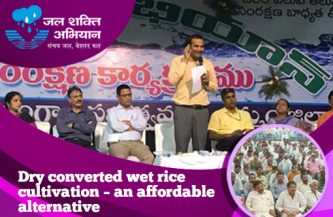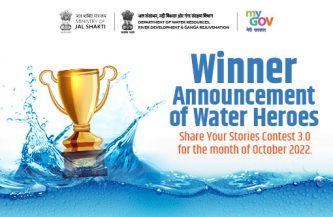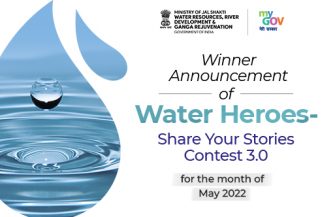Revamping the village pond stabilizes the water scarcity

INTRODUCTION
The residents of Bramhonon ki Sareri village, which is situated in Asind block of Bhilwara District in Rajasthan, have been facing severe water shortage, especially during the summer season. The annual rainfall in the region has remained less than 500 mm since 2008. The minor dams that are constructed in the early years have also dried up due to erratic rainfall because of which the women are forced to travel a long distance to fetch drinking water. The village has a pond called Dharmi Talav, which is filled with sand mounds and wild babul trees making it unsuitable for any use. So the villagers requested for its renovation in the year 2017.


IMPLEMENTATION
The proposal for the renovation of Dharmi Talav was approved by the Gram Sabha in August 2017 under MGNREGS at a cost of Rs. 35.08 lakhs (Rs. 6.25 lakhs for wages and Rs. 28.83 lakhs for materials). The removal of sand mounds, bushes and the deep-rooted babul trees from the channel that carries water to the pond was a daunting task. Trenches were dug inside the pond to increase its water retention capacity and help percolation of water to the underground aquifer.

VOICE
“We used to get impure water in our village, which made our children sick with joint pain. They are feeling better now. Our animals suffered as they had no proper access to water. Deepening of the pond has increased the availability of water”. —Shri Jamunalal, [MGNREGS Worker and Marginal Farmer]

“Though this village received water from Chambal River, the water was not enough always. The borewell dug near the pond now supplements the drinking water needs of the village quite efficiently”. —Smt. Rukmini Devi, [MGNREGS Worker]

IMPACT
Impact Apart from meeting the drinking water needs of a population of 5,000 in the village, the pond also met the water needs of nearly 2,500 livestock. Approximately, 150 farmers who depend on 21 wells downstream now get sufficient water for rabi crops, mainly wheat. The yield of wheat has increased from 300–400 kg to 500–600 kg per acre. The irrigated area has increased by 18.54 hectares. The pond now covers 9.84 hectares of land with an increased storage capacity of 108 lakh gallons of water. Due to enhanced soil moisture, 50 bighas of pastureland now has a vegetation cover throughout the year. An increase of 3–6 ft. in water table in the nearby wells has reduced the plight of women as they are no longer required to walk long distances to fetch water.





